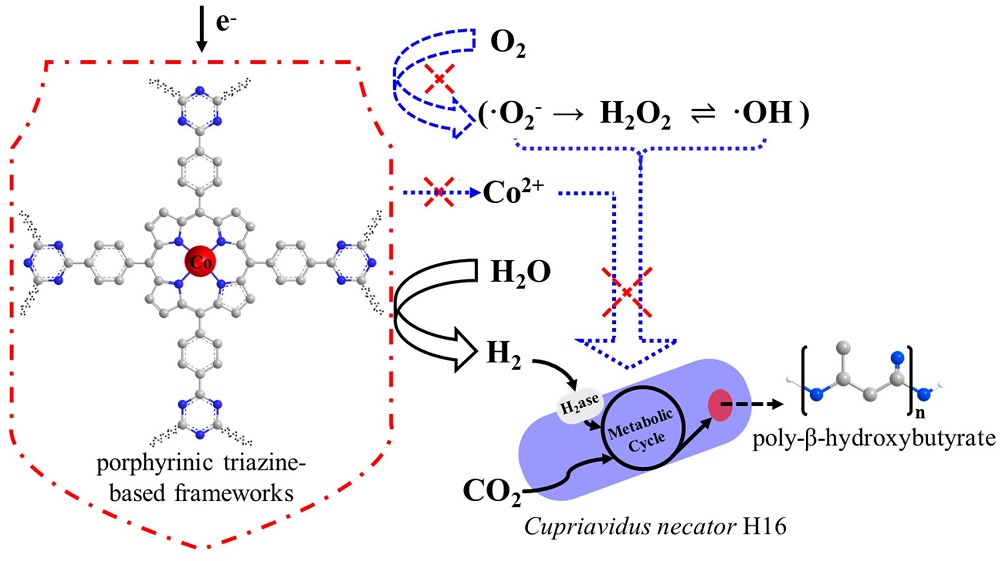O
2 is the electron acceptor of aerobic metabolism and is necessary for
C. necator to fix CO
2 into PHB [
43]. Accordingly, MES system is operated in a single-chamber reactor, where O
2 is continuously produced from the anode then dissolves into electrolytes for microbial assimilation. Inevitably, ROS to which O
2 is partially reduced will be generated at the cathode, because the overpotentials of ROS are lower than that of HER in neutral solution [
16]. ROS are highly oxidative intermediates. There are three major species recognized, including ·O
2–, H
2O
2 and ·OH [
44]. On the basis of the reaction pathway [
45] shown in Fig. S4 (cf. ESM), the formation of ROS mainly depends on the two-electron instead of four-electron ORR pathway. H
2O
2 and ·OH are known as nonselective oxidants in the field of advanced oxidation [
46], whose oxidative abilities are so strong that organic biomolecules such as DNA, phospholipid bilayer and proteins will be subjected to irreversible damage. Although ·O
2– induces less oxidative stress, it is still worth detecting its concentration since ·O
2– is the precursor of the other ROS [
47]. To determine the relative yields of ROS, SS was chosen for comparison. Semi-quantitation of the concentration of ·O
2– was characterized by a ·O
2– specific probe on the base that the intensity showed a positive correlation with the concentration of ·O
2–. The determination results of ROS were shown in Fig.4. The intensity of Co@PTF was lower than that of SS throughout the test exhibited in Fig.4(a). Accordingly, less production of ·O
2– with Co@PTF than SS can be concluded. As illustrated in Fig.4(b), the H
2O
2 concentration of Co@PTF got to the maximum value of approximately 42.2 μmol·L
–1, which was only one-fifteenth as many as that of SS (611.3 μmol·L
–1). The ·OH concentration was determined using the TA method. As can be seen from Fig.4(c), the ·OH concentration of Co@PTF reached the maximum value of 0.276 μmol·L
–1 at the sampling time of 5 h. On the contrary, the ·OH concentration of SS got to 5 times larger than that of Co@PTF (1.47 μmol·L
–1). The above results proved less production of ROS, including H
2O
2, ·OH, and ·O
2– with Co@PTF than SS.









